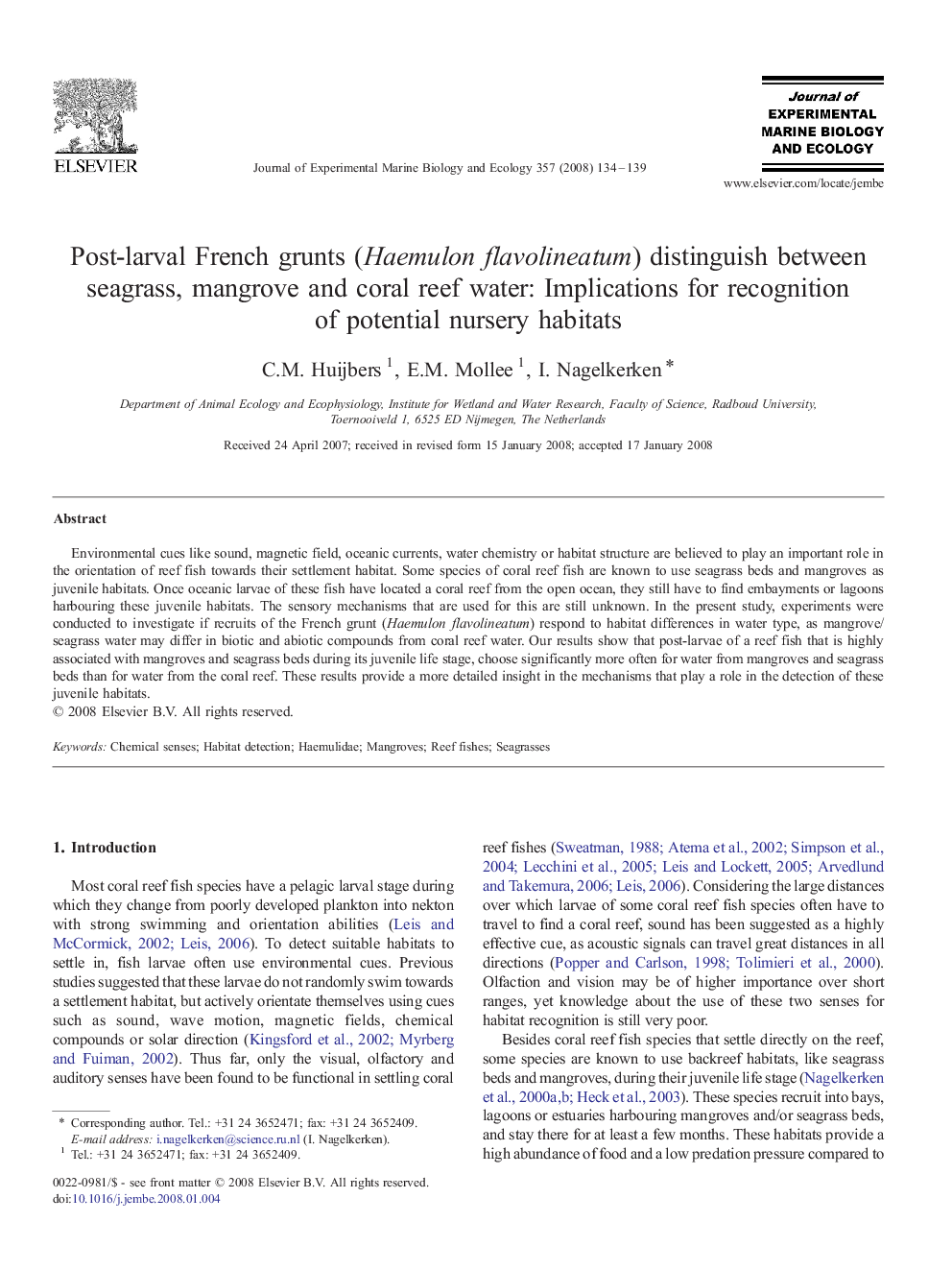| Article ID | Journal | Published Year | Pages | File Type |
|---|---|---|---|---|
| 4397330 | Journal of Experimental Marine Biology and Ecology | 2008 | 6 Pages |
Abstract
Environmental cues like sound, magnetic field, oceanic currents, water chemistry or habitat structure are believed to play an important role in the orientation of reef fish towards their settlement habitat. Some species of coral reef fish are known to use seagrass beds and mangroves as juvenile habitats. Once oceanic larvae of these fish have located a coral reef from the open ocean, they still have to find embayments or lagoons harbouring these juvenile habitats. The sensory mechanisms that are used for this are still unknown. In the present study, experiments were conducted to investigate if recruits of the French grunt (Haemulon flavolineatum) respond to habitat differences in water type, as mangrove/seagrass water may differ in biotic and abiotic compounds from coral reef water. Our results show that post-larvae of a reef fish that is highly associated with mangroves and seagrass beds during its juvenile life stage, choose significantly more often for water from mangroves and seagrass beds than for water from the coral reef. These results provide a more detailed insight in the mechanisms that play a role in the detection of these juvenile habitats.
Related Topics
Life Sciences
Agricultural and Biological Sciences
Aquatic Science
Authors
C.M. Huijbers, E.M. Mollee, I. Nagelkerken,
